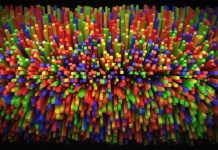Deep Learning is a subset of artificial intelligence and machine learning that has gained significant prominence in recent years due to its remarkable capabilities in solving complex problems and making accurate predictions. At its core, deep learning involves training artificial neural networks with multiple layers (hence the term “deep”) to process and learn from vast amounts of data. These networks are inspired by the structure and functioning of the human brain, enabling machines to extract features and patterns from data to make informed decisions. Here’s a comprehensive overview of key aspects related to Deep Learning:
Definition and Structure:
Deep Learning involves artificial neural networks with multiple hidden layers between the input and output layers. The presence of multiple layers allows these networks to learn intricate representations of data by building a hierarchy of features.
Artificial Neural Networks:
Artificial Neural Networks (ANNs) are the foundation of deep learning. These networks consist of interconnected nodes or neurons, organized in layers, mimicking the human brain’s structure. Each neuron processes information and passes it to the next layer, eventually producing an output.
Training and Backpropagation:
Training a deep learning model involves providing it with labeled training data to learn patterns. Backpropagation is the primary algorithm used for training, where errors are calculated and fed back through the network to adjust the weights, minimizing the difference between predicted and actual outputs.
Activation Functions:
Activation functions are crucial elements within neural networks that introduce non-linearity, allowing the network to learn complex patterns. Common activation functions include sigmoid, rectified linear unit (ReLU), and hyperbolic tangent (tanh).
Deep Learning vs. Machine Learning:
Deep Learning differs from traditional machine learning mainly in the depth and complexity of the networks. While machine learning algorithms often rely on feature extraction and selection, deep learning models automatically learn these features from the data.
Applications:
Deep Learning finds applications across various domains, including computer vision, natural language processing, speech recognition, recommendation systems, healthcare, finance, and autonomous vehicles. It powers technologies such as facial recognition, language translation, image and object recognition, and more.
Convolutional Neural Networks (CNNs):
CNNs are a specialized type of deep learning model designed for processing grid-like data, such as images and videos. They use convolutional layers to automatically learn features hierarchically, making them highly effective in image recognition tasks.
Recurrent Neural Networks (RNNs):
RNNs are suitable for sequential data processing, making them ideal for applications like language modeling, time series prediction, and speech recognition. RNNs have loops in their architecture, allowing them to retain information and consider context.
Transfer Learning:
Transfer Learning is a technique widely used in deep learning, where a pre-trained model on a large dataset is fine-tuned for a specific task. This approach saves training time and data, making it highly efficient.
Challenges and Future Trends:
Deep Learning faces challenges such as overfitting, interpretability, and the need for substantial computational resources. Addressing these challenges and exploring areas like explainable AI, reinforcement learning, and unsupervised learning are pivotal for the future of deep learning.
Deep Learning is a powerful and evolving field within artificial intelligence that has demonstrated exceptional capabilities in solving a diverse range of problems. Understanding its fundamental principles and applications is essential for leveraging its potential in various domains and driving innovation in technology and research.
Deep Learning, a subset of artificial intelligence, is characterized by its ability to autonomously learn and make informed decisions from data, thus eliminating the need for explicit programming. The structure of deep learning models, primarily built on neural networks, involves multiple layers of interconnected nodes. Each layer processes data and extracts intricate features, allowing the model to learn complex representations from the input data. The learning process involves training these models on vast amounts of labeled data, iteratively adjusting the model’s internal parameters, known as weights and biases, to minimize the difference between predicted and actual outputs. The backpropagation algorithm is a fundamental aspect of this process, fine-tuning the model’s parameters to improve accuracy.
Activation functions within deep learning are essential for introducing non-linearity into the model, enabling it to learn and approximate complex relationships in the data. Commonly used activation functions include the sigmoid, tanh, and ReLU functions, each serving specific purposes in the learning process. Deep learning represents a significant departure from traditional machine learning by allowing the model to automatically extract features from the data, eliminating the need for manual feature engineering. The application domains of deep learning are diverse, ranging from computer vision to natural language processing, and continue to expand rapidly with ongoing research and development.
Convolutional Neural Networks (CNNs), a specialized architecture within deep learning, are highly effective for image and video processing tasks. They use convolutional layers to scan and identify patterns in images, making them invaluable for tasks like image recognition, object detection, and facial recognition. Recurrent Neural Networks (RNNs), on the other hand, are well-suited for sequential data, such as language or time series data. The ability to retain context and consider past inputs makes RNNs ideal for tasks like speech recognition, language translation, and sentiment analysis.
Transfer Learning is a technique that leverages pre-trained deep learning models on large datasets and adapts them to specific tasks. This approach significantly reduces training time and data requirements while maintaining high performance. However, deep learning is not without its challenges. Overfitting, a common problem, occurs when the model learns noise in the training data rather than the actual patterns. Addressing issues like interpretability, computational resources, and ethical considerations are crucial for the continued advancement and responsible application of deep learning.
Looking ahead, future trends in deep learning are expected to focus on overcoming current challenges. Explainable AI aims to enhance model interpretability, allowing users to understand and trust the model’s decisions. Reinforcement Learning, inspired by human behavior learning, holds promise for more sophisticated decision-making processes. Additionally, advancements in unsupervised learning, which involves learning patterns from unlabeled data, have the potential to unlock new opportunities and applications in the field of deep learning.
In conclusion, deep learning represents a remarkable paradigm shift in artificial intelligence, enabling machines to learn complex patterns and make data-driven decisions. Its applications continue to expand and evolve, permeating diverse domains and industries. Understanding the principles and staying updated with the ongoing developments in deep learning is critical for professionals and enthusiasts alike, ensuring they harness its potential to drive innovation and tackle real-world challenges.






















